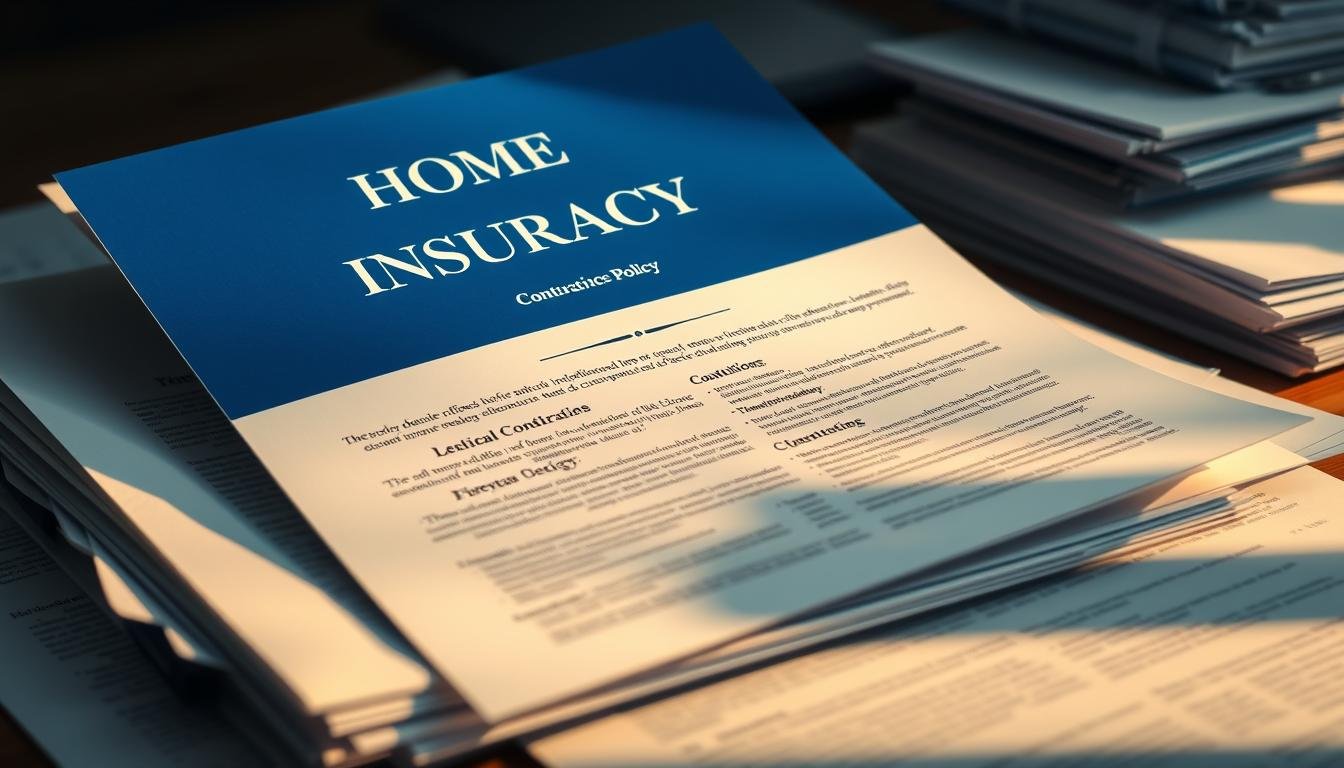Did you know car premiums jumped 12.7% nationally in just one year? With costs climbing faster than ever, savvy shoppers are finding relief by combining two critical protections under one roof.
Pairing your property and vehicle coverage isn’t just about convenience. Many providers reward customers with discounts up to 25% for keeping both policies in-house. “Customers often see immediate savings while simplifying claims,” notes industry expert Mike Barrett.
Recent rate hikes make this strategy particularly timely. Home protection plans aren’t immune to price bumps either, creating a perfect storm for budget-conscious households. Rajni Kapur, a financial advisor, emphasizes: “Consolidating coverage lets families redirect funds toward other priorities without sacrificing security.”
This guide walks you through smart strategies to blend protections seamlessly. We’ll explore how to balance cost cuts with robust coverage, spot red flags when comparing companies, and avoid common pitfalls. Let’s turn those separate premiums into combined power.
Key Takeaways
- Combining policies often unlocks discounts between 10% and 25%
- Auto coverage costs rose 12.7% nationally from 2023 to 2024
- Single-provider management simplifies payments and claims
- Experts like Kapur and Barrett endorse this money-saving approach
- Upcoming sections detail pros, cons, and provider selection tips
What is Insurance Bundling?
Ever wondered how to streamline your protection plans while keeping cash in your wallet? Combining policies with one provider could be your answer. Let’s break down how this strategy works and why it’s gaining traction nationwide.
Definition and Overview
Insurance bundling means purchasing two or more coverage types from the same company. For example, you might pair your house and car plans under one roof. This approach simplifies paperwork and often unlocks savings.
Managing multiple protections becomes easier with a single login portal and combined billing cycles. Instead of tracking separate renewal dates, you’ll handle everything through one dashboard. Many providers reward this loyalty with discounts averaging 15-20%.
Context in the U.S. Market
Rising costs have pushed 42% of American households to bundle policies since 2022. With car coverage prices soaring and property rates climbing, dual plans offer financial relief. Industry reports show bundled customers save $487 annually compared to separate policyholders.
| Policy Type | Average Annual Cost | Typical Bundle Savings |
|---|---|---|
| Standalone Auto | $1,842 | N/A |
| Standalone Home | $1,314 | N/A |
| Bundled Package | $2,669 | $487 |
This table illustrates how pairing protections impacts your budget. While exact numbers vary by state and provider, the pattern holds nationwide. Companies increasingly promote these packages to retain customers longer.
Benefits of Bundling Home and Auto Insurance
Could your current protection plans work harder for your wallet? Combining coverage through one provider unlocks perks beyond basic price cuts. Let’s explore how this approach strengthens your financial safety net.

Understanding the Discount Advantages
Insurers frequently reward customers who maintain multiple policies. Discounts averaging 10-25% apply to both property and vehicle plans when bundled. “Customers essentially get paid for consolidating risk,” explains State Farm agent Lisa Moreno. This dual-policy strategy helps companies predict claims more accurately, passing savings to you.
Major carriers like Allstate and Progressive often advertise 20% off for combined plans. These rate reductions compound over time – a $1,500 annual premium could shrink by $300 yearly. Unlike temporary promotions, these discounts typically renew annually when maintaining both coverages.
Simplified Management and Service
One dedicated agent becomes your go-to for questions and claims. Need to update your address or review coverage limits? A single call handles both policies. This streamlined approach cuts paperwork hassles by 40% according to industry surveys.
Many providers offer consolidated billing cycles and loyalty rewards. Farmers Insurance, for example, gives bundled customers priority claims processing. You’ll also avoid juggling multiple renewal dates – a practical perk for busy households.
Pros: Coverage, Savings & Convenience
Imagine handling a storm-damaged roof and a dented fender through one phone call. That’s the streamlined reality when combining protections under one provider. Let’s unpack how this approach transforms complex situations into manageable solutions.
Simplified Claims and One-Point Contact
Dealing with multiple adjusters becomes history. A single representative handles both property and vehicle claims during emergencies. This cuts stress by:
- Reducing call transfers between departments
- Syncing repair timelines for related damages
- Providing unified updates via email or text
Florida resident Tina Reyes shared how this worked during hurricane season: “My agent coordinated roof repairs and flood-damaged car repairs simultaneously. No juggling case numbers or repeating details.”
Long-Term Partnership Benefits with Your Agent
Year after year, your representative learns your family’s needs. They’ll spot coverage gaps before you do. “Regular policy reviews help clients avoid underinsurance traps,” says Liberty Mutual agent Carlos Mendez. This proactive approach might lead to suggestions like:
- Umbrella policies for inherited assets
- Seasonal adjustments for vacation homes
- Usage-based car insurance programs
Loyal customers often receive perks like waived deductibles or expedited claims. One Allstate client reported getting free roadside assistance added after five years of bundled coverage.
Cons: When Bundling May Not Work for You
What if saving money actually costs you better protection? While keeping policies under one roof works for many, some situations demand a different approach. Let’s explore when sticking with separate plans might serve you better.

Specialized Protection Gaps
High-value homes and drivers with multiple tickets often need tailored solutions. Luxury property insurer Chubb reports 37% of clients save more with standalone policies. “Bundled packages rarely include art collections or vintage car coverage,” explains risk consultant Dana Whitmore.
Consider these scenarios where splitting makes sense:
- Classic vehicle owners paying 60% more through standard bundles
- Coastal homeowners needing hurricane riders unavailable from auto-focused insurers
- Rideshare drivers requiring hybrid commercial/personal car coverage
The Switching Dilemma
Locking multiple plans with one provider can trap you during rate hikes. A 2024 J.D. Power study found 28% of bundled customers felt stuck with unfavorable terms. If your car insurer raises prices, dropping just that coverage might void your home discount.
| Policy Type | Coverage Options | Provider Flexibility |
|---|---|---|
| Bundled | Standard packages | Limited (tied together) |
| Separate | Customizable add-ons | High (individual changes) |
Phoenix resident Mark Torres saved $214/year by splitting policies after his teen driver’s rates spiked. “Our house insurer couldn’t match the standalone car rate we found elsewhere,” he noted. Sometimes, chasing the bundle discount means settling for mediocre coverage in one area.
Evaluating Your Personal Insurance Needs
Not all insurance packages fit like a glove. Your unique situation determines whether combined plans strengthen your safety net or leave gaps. Start by digging into your current protections before making changes.
Assessing Your Existing Policies
Grab your latest policy documents and highlight three key areas: coverage limits, exclusions, and renewal dates. Renters often discover their belongings aren’t fully protected during natural disasters listed in fine print. Homeowners might find outdated rebuild cost estimates after recent construction price hikes.
Create a simple comparison chart like this:
| Factor | Bundled Plan | Separate Policies |
|---|---|---|
| Annual Cost | $2,800 | $3,100 |
| Claims Process | Single point of contact | Multiple adjusters |
| Customization | Standard options | Specialized add-ons |
Texas resident Amy Chen saved $327/year by splitting policies after realizing her bundle excluded flood protection. “Our insurer didn’t offer competitive rates for both needs,” she explained.
Determining When Separate Policies Could Save You More
High-risk scenarios often break the bundle advantage. Coastal residents might pair windstorm coverage from a regional specialist with standard auto protection elsewhere. Consider these signs to split:
- Your state has unique weather risks requiring specific riders
- One insurer offers significantly better rates for a single policy type
- You need non-standard protections like earthquake or collectibles coverage
Always compare total costs – sometimes paying slightly more for critical specialized coverage outweighs bundle discounts. Review options annually as life circumstances change.
Step-by-Step Guide to Bundle Your Policies
Taking control of your coverage starts with smart preparation. Follow this roadmap to combine protections efficiently while maximizing value.
Researching Insurance Companies and Gathering Quotes
Begin by listing at least five reputable insurers. Visit their websites or call agents to request bundled rate estimates. Comparison tools like NerdWallet help spot hidden fees or coverage exclusions.
Ask each provider specific questions:
- How much will I save compared to separate policies?
- Do discounts increase over time?
- What claim processes differ between home and auto?
Review third-party ratings from J.D. Power or AM Best. Arizona resident Kayla Nguyen shared: “I avoided three poorly-rated companies by checking complaint ratios first.”
Coordinating Policy Start Dates and Transitioning Smoothly
Align your new package’s effective date with existing policy expirations. This prevents double-paying or gaps. Most insurers let you choose start dates within 30 days of purchase.
Before canceling old plans:
- Confirm cancellation fees (if any)
- Get written confirmation of termination
- Save final bills for tax records
“Overlapping coverage by two days saved me when a hailstorm hit during the switch,” noted Colorado customer Derek Mills. Smart timing makes financial sense and keeps you protected through transitions.
Finalize your bundle by setting up automatic payments and downloading your insurer’s mobile app. These steps lock in savings while simplifying future claims and policy updates.
Choosing the Right Insurance Company for Bundling
How do you pick the perfect partner for your combined coverage? The best matches balance competitive pricing with reliable support. Start by examining how different providers structure their package deals and handle claims.
Discount Structures and Plan Variety
Not all bundle discounts work the same. Some companies offer bigger upfront savings, while others provide long-term rate guarantees. Compare these key factors:
| Insurance Company | Bundle Discount | Unique Perks | Customer Rating |
|---|---|---|---|
| Geico | 15% | Multi-policy rewards program | 4.3/5 |
| State Farm | 20% | Accident forgiveness add-on | 4.5/5 |
| USAA | 25% | Military member benefits | 4.8/5 |
Military families often find USAA’s specialized offerings meet their unique needs. Geico’s straightforward pricing appeals to budget-focused households. “The right provider aligns with your priorities – whether that’s price, flexibility, or specialty coverage,” advises financial planner Rachel Nguyen.
Service Quality and Reliability Checks
Dig beyond marketing claims. Check third-party sites like J.D. Power for complaint ratios and claims satisfaction scores. Look for patterns in reviews:
- Response time during major weather events
- Ease of filing combined claims
- Availability of local agents
Ohio resident Marco Torres switched providers after his first-choice company had poor hurricane response ratings. “Customer service makes all the difference when you’re stressed after a disaster,” he notes. Always verify how companies handle complex scenarios involving both property and vehicle damage.
Your ideal place for bundling home auto coverage should feel like a trusted teammate – ready to adapt as your needs evolve. Prioritize companies that explain options clearly and offer multiple contact channels.
Expert Insights and Industry Trends
What do top analysts say about pairing protections in today’s volatile market? Industry leaders emphasize that strategic bundling requires both optimism and caution. Let’s unpack their perspectives to help you navigate shifting conditions.
Professional Opinions on Bundling Strategies
Michael Orefice of SmartFinancial notes: “Combining policies creates rate stability – but only if your provider adjusts discounts with market shifts.” His team found customers who save money long-term typically review coverage annually. Rajni Kapur adds: “Insurers now weigh regional risks more heavily. A Florida bundle might cost 18% more than Ohio’s, even with discounts.”
Analyzing Market Trends and Rate Increases
Carriers are quietly trimming multi-policy discounts as claims surge. Allstate recently reduced its bundle savings from 25% to 20% in storm-prone states. Meanwhile, State Farm introduced homeowners insurance credits for installing impact-resistant roofs when paired with auto plans.
Three critical moves experts recommend:
- Compare standalone vs. bundled rates every renewal cycle
- Ask providers about loyalty programs that lock in discounts
- Monitor regional rate filings through your state’s insurance department
While 63% of bundled customers still save money according to J.D. Power, the gap between best and average deals widened 40% since 2022. Your strategy should evolve as insurance companies recalibrate their risk models.
Conclusion
Finding the right protection plan requires balancing savings with security. Combining policies under one company often delivers immediate discounts and streamlined service. But as recent rate hikes show, this approach doesn’t work universally.
Compare bundle home packages against standalone options annually. Specialized needs – like renters insurance or classic car coverage – might demand separate solutions. A 2024 J.D. Power study found 1 in 4 bundled customers overpaid for mismatched protections.
Ask yourself: Does one policy manager simplify your life without compromising critical safeguards? Could splitting plans unlock better rates or tailored riders? Experts recommend reviewing options every renewal cycle, especially after major life changes.
Take action today. Bookmark rate comparison tools, schedule a mid-year coverage checkup, and consult licensed agents. Whether you consolidate protections or mix providers, regular audits ensure you’re never overpaying for gaps in your safety net.
FAQ
What does bundling home and auto policies mean?
Bundling means combining two or more policies (like car and homeowners insurance) under one company. Many insurers offer discounts for this, making it a popular choice in the U.S. market.
How much can I save by combining my car and homeowners insurance?
Savings vary by insurer, but many companies offer up to 25% off when you bundle. Always compare quotes to ensure you’re getting the best rate for your specific needs.
Will bundling limit my coverage options?
Some providers may restrict specialized add-ons for bundled plans. Review policy details carefully—especially if you need unique protections like classic car or high-value home coverage.
Is it harder to switch providers if I bundle?
It can be, since moving both policies at once requires coordination. However, working with a trusted agent helps simplify transitions if better rates or coverage arise elsewhere.
Can renters bundle insurance with auto policies?
Yes! Many insurers let renters combine auto and renters insurance for discounts. This option is ideal for apartment dwellers wanting streamlined service.
How do I start bundling my current policies?
Begin by researching top-rated insurers like State Farm or Allstate. Compare their bundled rates, then contact an agent to align policy dates for a smooth switch.
Does bundling improve claims handling?
Often, yes. Having one point of contact for home and auto claims can speed up resolutions. Companies like Liberty Mutual prioritize bundled customers during claims processes.
Are there times when separate policies make more sense?
If one insurer offers significantly better rates for either car or homeowners coverage alone, splitting policies might save more. Always crunch the numbers first.




